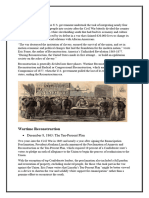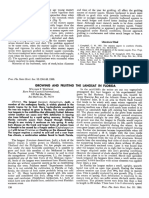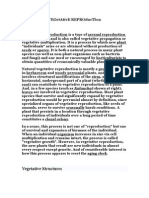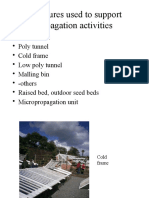0% found this document useful (0 votes)
0 views7 pagesSec Assignment V
Vegetative propagation is an asexual reproduction method in plants that produces genetically identical offspring from vegetative parts like stems, roots, and leaves. It is widely used in horticulture and agriculture for rapid plant multiplication, preservation of desirable traits, and production of seedless varieties. While it offers advantages such as clonal fidelity and disease-free plants, it also has drawbacks like lack of genetic variation and high costs associated with certain artificial techniques.
Uploaded by
Devanshi GuptaCopyright
© © All Rights Reserved
We take content rights seriously. If you suspect this is your content, claim it here.
Available Formats
Download as DOCX, PDF, TXT or read online on Scribd
0% found this document useful (0 votes)
0 views7 pagesSec Assignment V
Vegetative propagation is an asexual reproduction method in plants that produces genetically identical offspring from vegetative parts like stems, roots, and leaves. It is widely used in horticulture and agriculture for rapid plant multiplication, preservation of desirable traits, and production of seedless varieties. While it offers advantages such as clonal fidelity and disease-free plants, it also has drawbacks like lack of genetic variation and high costs associated with certain artificial techniques.
Uploaded by
Devanshi GuptaCopyright
© © All Rights Reserved
We take content rights seriously. If you suspect this is your content, claim it here.
Available Formats
Download as DOCX, PDF, TXT or read online on Scribd
/ 7









































